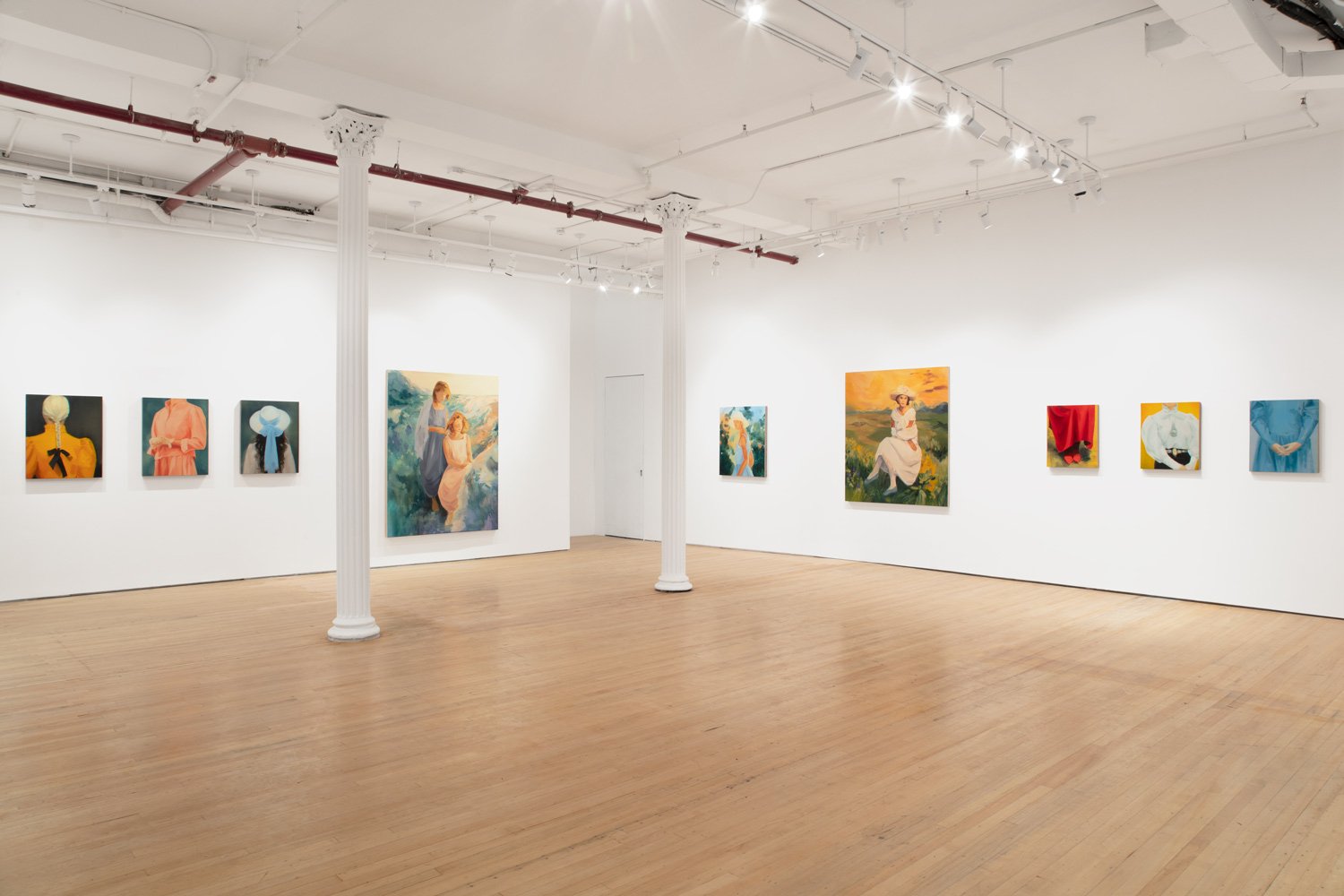Corri-Lynn Tetz
Nov 3 - Dec 17, 2022 at 21 Cortlandt Alley, 2nd Floor, New York
Heaven goes on forever and ever and ever…
Arsenal Contemporary Art New York is pleased to present a solo exhibition of Montreal-based painter Corri-Lynn Tetz. Exhibition text by Tatum Dooley.
“Heaven Goes on Forever and Ever and Ever,” the title of Corri-Lynn Tetz’s first show at Arsenal Contemporary Art New York, is a prospect equally daunting and comforting, cutting to the chasm at the root of Tetz’s paintings. The show, which consists of twelve paintings, continues Tetz’s interest in depicting the spectrum of women's experiences through a distinctly female lens. The pastel perfection in this series of paintings establishes an unrealistic ideal, despite the aura of realism. Like a horseshoe, everything appears to be so idyllic that it loops back around to be menacing.
The women in Tetz’s paintings are models playing a part, cut-outs of perfection on an equally immaculate landscape. Tropes of womanhood repeat: the part of the coy wife, the loving sister, the demure society girl. There’s tenderness for the subjects that Tetz displays throughout: delicate hands clasped together or shoulders back and back straight, the same way a mother instructs. In the series of smaller paintings, Tetz narrows in on the details, zooming in on the fabric of a billowing blouse, the point of a shoe, and the straight plait of hair down the back. The face is mysteriously absent in this series of small works, Tetz preferring to focus on the details that culminate to make this very specific ideal of a woman.
If tempted to date the women in this show, an immediate guess would be anywhere from the 1870s (when Little House on the Prairie was set) to the 1950s when Laura Ashley’s dresses launched into popularity. But the paintings could just as well be set today, echoing a recent resurgence of prairie dresses in popular culture with brands like Batsheva, Staud, and countless other fashion companies catering to young women who want to dress in full-length dresses with subtle bodices and puffed sleeves. This reversion to conservative and demure fashion-sense tracks with the surprising trend of Catholicism among young people (see: a 2022 New York Times article titled “New York’s Hottest Club Is the Catholic Church,” and “How Catholicism became alt-fashion's saviour,” in iD magazine). The trad-wife—a recently coined term for a woman whose goal it is to return to traditional standards that women be judged on—is a conservative extension of this trend, and includes a utopian/dystopian vision that includes bread baking, child-rearing, and aesthetic standards meant to communicate a loyalty to a single man.
Tetz subtly meditates on this Christian ethos in multiple ways. The title of the show, fashion choices, and paradisal landscapes all come together to comment on the outward goal of perfection and inner guilt and turmoil so prevalent in Christianity. To be a woman is to have so much guilt for simply existing that you push yourself to perfect every small detail that is perceived to be wrong about you. (After writing that sentence, I return to the paintings and see an abject sadness in the faces of the women, but that could just be a projection). The paintings in “Heaven Goes on Forever and Ever and Ever,” float above a specific time period and instead capture the malleability of time, especially in regards to expectations of women.
Tetz’s paintings remind me of Édouard Manet’s “Mademoiselle V … in the Costume of an Espada.” Painted by Manet in 1862 of the famous model Victorine Meurent, the painting appears as if a cut-out, separated from the loosely filled-in background and floating off the ground. In a New York Times Magazine essay, Jason Farago writes: “Manet went out of his way to advertise that the painting’s subject is herself an artificial creation. This is not a painting of a Spanish bullfighter. This is a painting of a French woman posing as an espada, and Manet doesn’t want you to forget it.” A similar phenomenon takes place in Tetz’s canvases: the relationship between paint and performance is constantly present. Tetz reminds us that what we’re viewing are representations of representations, a meta-commentary. The figures float subtly off the ground they stand on, as if they were apparitions. The background feels like a backdrop of a film set: a whirlwind of nature, a constant sunset. Perhaps these paintings take place not on earth, but in Heaven.









